Polaris Ranger utility vehicles are known for their durability and versatility. As with any machine, it can have problems as well. One area where Polaris Ranger owners often encounter issues is with the clutch system. In this article, we will discuss five major Polaris Ranger clutch problems and provide the best solutions to help you solve them.
5 Major Polaris Ranger clutch problems
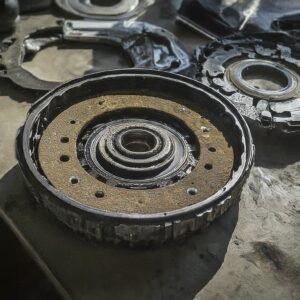
Here are some common clutch problems of Polaris Ranger of all models like Polaris Ranger 1000.
1. Slipping Clutch:
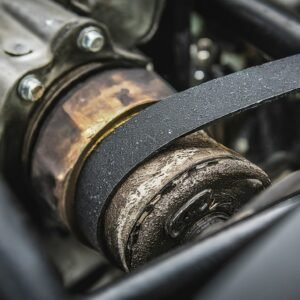
When your Polaris Ranger’s clutch starts slipping, it’s important to know why it’s happening and what you can do about it.
A slipping clutch means it’s not fully connecting the engine’s power to the wheels. You might notice your engine revving up without the expected increase in speed, especially when you’re going uphill or towing something heavy.
Here are some reasons why your clutch might be slipping:
- Worn Clutch Plates: Over time, the clutch plates wear out. This means they can’t grip the flywheel and pressure plate as well as they should. If you’re rough on your vehicle or frequently tow heavy loads, this wear can happen faster.
- Improper Clutch Adjustment: If the clutch cable or hydraulic system isn’t adjusted correctly, your clutch won’t engage properly. You might feel too much play in the clutch pedal or notice it engaging inconsistently.
- Oil Contamination: Oil or other fluids getting onto the clutch surfaces can make them slippery. This can happen if there are leaks from your engine or transmission, or if you’re driving in dusty or muddy conditions where debris can get into the clutch housing.
- Damaged Clutch Components: Any damage to parts like the pressure plates, release bearings, or springs can affect your clutch’s ability to transfer power effectively. Rough driving, overheating, or neglecting maintenance can cause this damage.
To fix a slipping clutch, try these steps:
- Inspect Clutch Components: Take a look at the clutch assembly for signs of wear or damage. Check the plates, pressure plate, release bearing, and clutch fork. If anything looks worn or broken, it’s time for a replacement.
- Adjust Clutch Cable or Hydraulic System: Make sure your clutch cable or hydraulic system is set up just right. This might mean adjusting the cable tension or bleeding the hydraulic system to get rid of any air bubbles.
- Clean Clutch Surfaces: If you suspect oil contamination, clean the clutch surfaces carefully with a degreaser or solvent. Just be sure to follow safety precautions and keep the solvent away from other parts of your vehicle.
- Avoid Aggressive Driving: Try not to be too rough on your clutch. Avoid revving the engine excessively, riding the clutch, or towing loads that are too heavy for your Ranger to handle.
- Regular Maintenance: Keep up with your Polaris Ranger’s maintenance schedule. Check the clutch system periodically to catch any problems early and prevent them from getting worse.
By understanding why your clutch is slipping and taking these steps to fix it, you can keep your Polaris Ranger running smoothly for miles to come. If you’re not sure about doing the repairs yourself, don’t hesitate to seek help from a professional mechanic.
2. Clutch Drag
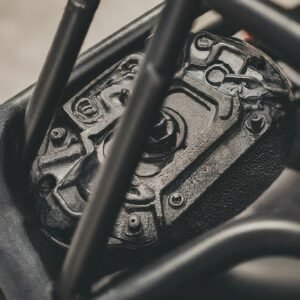
Clutch drag is a frustrating issue where your clutch doesn’t completely disengage when you press the pedal, causing difficulty in shifting gears smoothly. You might notice that even when you push the clutch pedal down, the vehicle still wants to move forward slightly, or you might feel resistance when trying to shift gears.
There are several reasons why clutch drag might occur:
- Misadjusted Clutch Cable: If the clutch cable isn’t adjusted correctly, it can prevent the clutch from fully disengaging. This could happen due to wear and tear over time or improper adjustments during maintenance.
- Worn Clutch Components: Over time, the clutch components such as the pressure plate, clutch disc, or release bearing can wear out. When these parts wear down, they might not disengage the clutch fully, leading to drag.
- Hydraulic Issues: In vehicles with hydraulic clutch systems, problems such as air in the hydraulic lines, low fluid levels, or leaks can prevent the clutch from fully disengaging. This can result in clutch drag and difficulty shifting gears.
- Clutch Linkage Problems: The linkage that connects the clutch pedal to the clutch assembly can also be a source of drag if it’s misaligned, damaged, or worn out.
So, how can you address clutch drag and get your Polaris Ranger back to smooth operation?
Firstly, it’s essential to diagnose the root cause of the problem. You might need to inspect the clutch components, check the clutch cable tension, or examine the hydraulic system for any issues.
If the clutch cable is misadjusted, you can adjust it according to the manufacturer’s specifications to ensure proper clutch disengagement.
If worn clutch components are the issue, you’ll likely need to replace them. This might involve removing the transmission to access the clutch assembly, so it’s a job best left to experienced mechanics unless you’re confident in your mechanical skills.
For hydraulic issues, check the fluid level in the clutch master cylinder reservoir and inspect the lines for any leaks. If you find any leaks or air in the system, you’ll need to repair them and bleed the hydraulic system to remove any trapped air.
Overall, addressing clutch drag requires a careful inspection of the clutch system and a proper diagnosis of the underlying issues. By understanding the potential causes and following the appropriate steps for repair, you can resolve clutch drag and enjoy smooth shifting in your Polaris Ranger once again.
3. Clutch Fluid Leaks
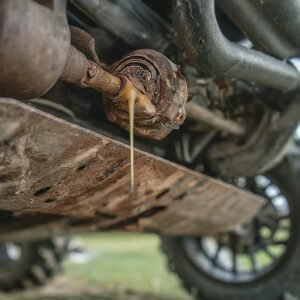
When it comes to Polaris Ranger clutch fluid leaks, it’s crucial to understand what they are, why they happen, and how to address them to keep your vehicle running smoothly.
Clutch fluid, also known as hydraulic fluid or brake fluid, is essential for the proper functioning of the clutch system. It’s responsible for transmitting hydraulic pressure from the clutch pedal to the clutch mechanism, allowing for smooth engagement and disengagement of the clutch.
A clutch fluid leak occurs when this fluid escapes from the hydraulic system, either due to damaged seals, worn hoses, or faulty components. You might notice puddles of fluid beneath your Polaris Ranger or a decrease in fluid levels in the reservoir.
Now, let’s delve into why these leaks happen:
- Damaged Seals: Over time, the seals in the hydraulic system can wear out or become damaged, leading to leaks. These seals are crucial for maintaining the system’s integrity and preventing fluid from escaping.
- Worn Hoses: The hoses that carry clutch fluid throughout the system can also degrade over time, developing cracks or leaks. This can result from exposure to heat, moisture, or other environmental factors.
- Faulty Components: Any malfunctioning components within the hydraulic system, such as the master or slave cylinders, can cause leaks. These parts may develop cracks or other issues that allow fluid to escape.
Addressing clutch fluid leaks is essential to maintain the performance and safety of your Polaris Ranger. Here’s how you can handle the situation:
- Inspect for Leaks: Start by visually inspecting the hydraulic system for any signs of leakage. Look for puddles beneath the vehicle or wet spots on hoses and components.
- Check Fluid Levels: Monitor the fluid level in the clutch reservoir. If you notice a significant decrease in fluid levels or if the fluid appears dirty or contaminated, it could indicate a leak.
- Repair or Replace: Depending on the source and severity of the leak, you may need to repair or replace damaged seals, hoses, or components. It’s essential to address leaks promptly to prevent further damage to the clutch system.
- Top Up Fluid: If the fluid level is low, top it up with the recommended type of clutch fluid specified in your Polaris Ranger’s manual. Be sure to use the correct type of fluid to avoid compatibility issues.
- Seek Professional Help: If you’re unsure how to diagnose or repair the leak yourself, it’s best to consult a professional mechanic who has experience working with Polaris Ranger vehicles. They can accurately diagnose the issue and perform the necessary repairs to ensure your vehicle’s clutch system operates smoothly.
4. Strange Noises
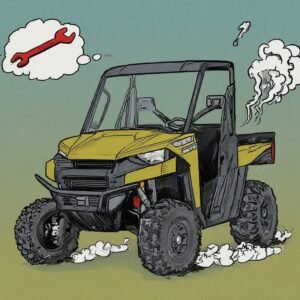
If you’re hearing strange noises coming from the clutch of your Polaris Ranger, it’s essential to understand what might be causing them and how to address the issue.
- Identifying the Noise: First, try to identify the type of noise you’re hearing. Is it a grinding sound, a rattling noise, or something else? This can give you a clue as to what might be wrong with the clutch.
- Possible Causes: Strange noises from the clutch can be caused by various factors. Worn-out bearings, damaged clutch plates, or loose components can all contribute to unusual sounds. Additionally, if there’s excessive wear or contamination within the clutch assembly, it can lead to noises during operation.
- Diagnosing the Issue: To pinpoint the source of the noise, you may need to inspect the clutch system thoroughly. This could involve removing the clutch cover and visually inspecting the components for signs of damage or wear. Pay attention to the condition of the clutch plates, bearings, and other relevant parts.
- Seeking Professional Help: If you’re not confident in diagnosing or fixing the issue yourself, it’s advisable to seek assistance from a qualified mechanic or technician. They can use specialized tools and expertise to diagnose the problem accurately and recommend the necessary repairs.
5. Clutch Overheating
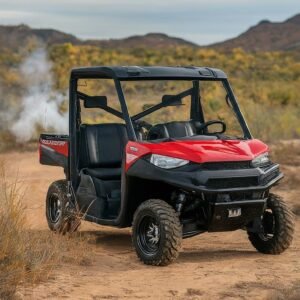
Excessive heat can cause the clutch to overheat, leading to premature wear and reduced performance. This can be a result of aggressive riding, towing heavy loads, or operating the vehicle in extreme conditions.
Solution: To prevent clutch overheating, it is important to avoid aggressive riding and excessive strain on the clutch system. Allow the clutch to cool down periodically during extended use, especially when towing heavy loads or operating in high-temperature environments. Additionally, ensuring proper clutch maintenance, such as regular inspection and lubrication, can help prevent overheating.
Conclusion:
The clutch system is an integral part of the Polaris Ranger, and encountering problems with it can be frustrating. However, by understanding the common clutch issues and their solutions, you can effectively address these problems and ensure the optimal performance of your Polaris Ranger. Regular maintenance, proper adjustment, and timely replacement of worn-out components are key to keeping your clutch system in good working condition.

